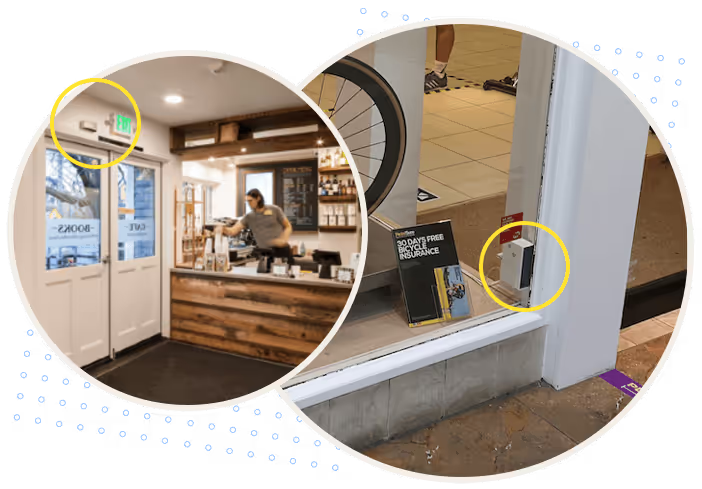What is people counting?
Simply put, people counting is the act of counting the number of people that pass a threshold, this number is often referred to as footfall. In retail, people are typically interested in counting the number of people that pass and enter their stores.
This is not a new concept. Since the dawn of retailing, merchants set up with their wares in the Greek Agora, or at crossroads rather than straights. Why? Because there would be more people there. Fast forward 3,000 years, retailing is far more complex, nuanced and data-driven, but understanding people count data is as imperative as ever.
People count (or footfall) data is an anchor point for almost all aspects of physical retailing: store performance, sales staff performance, marketing efficacy, opening times and staffing rotas.
Your business decisions; day-to-day and month-to-month are impacted by many data sources, and without a reliable database of people counts, it’s difficult to make the right decisions based on what’s happing in your store portfolio.
Automated people counters
There are many ways to collect people count data. With just one store, it’s possible to keep track of visitor numbers by hand, or it may even be enough to rely on gut feel for the busiest hours and days. However, as a retail company grows it will add stores, staff, marketing spend, and window display changes. Growth adds complexity, making it hard to keep track of the data, the decisions and the impact.
To solve this problem, the automated people counter emerged in the 1990s. It was a revolution in retail technology - no need to count people manually, the data was collected for you, to be reviewed at the end of the month with the sales data to assess store performance.
Since then, people counter technology has made leaps and bounds. Now boasting high levels of accuracy (far better than humans), low costs and easy install processes. As well as real-time reporting and full integration with POS sales data, allowing for the easy calculation and tracking of other key metrics, such as conversion rate.
The world has changed
Furthermore, the last few years have seen a step change in the high street and buyer behaviour. Retailers leverage an online and offline presence to build brand awareness and loyalty. Post-covid, we are seeing dramatic increases in the cost of customer acquisition online, with low loyalty and aggressive discounting. To distinguish themselves, retailers are relying on fewer, higher quality stores to define their brand experience, showroom their products, and build loyalty.
These are all difficult to track with sales data alone. Every person passing the store is an opportunity to impress with your brand proposition. Each visitor into the store that tries your product- but doesn’t purchase - could have been a lifelong customer.
Every time you are understaffed, closed at the wrong time, or have mis-marketing your proposition, you are losing opportunities.
.avif)
How is people count data used in retail?
Retailers vary in how they embed data into their business, from simple monthly reporting to daily analysis of the performance of their estate, all the way through to real-time decisions on triggering screen ads or music.
That being said, in general, retailers will use people count data to:
- Review passing street traffic to assess store placement and baseline the in-store data. For example, wet weather could mean quiet streets, which means quiet stores. The in-store count will be compared with passing traffic to understand how effective the window displays are at drawing in customers. It will also be used to make decisions on staff shifts required and opening times.
- The in-store count will then be compared with sales data to monitor conversion rates i.e. the number of visitors who convert into a buying customer. This is a KPI for in-store sales performance and also customer fit – you may be getting many people walking past your store, but a low conversion suggests the wrong customer profile for your brand.
- The power and impact of the metrics above is multipled when comparing across stores. This makes it possible to change processes, monitor the impact all the way along the funnel, then roll out best practices across the whole store estate.
Conclusion
Retailing has evolved considerably in the recent past; we are in a new era of data-driven feedback loops and optimisations. With this trend, for any physical store, one of the most powerful datapoints will be a reliable source of the basics. How many people pass your store, how many people walk in, and how many people buy.

%20(1).png)





